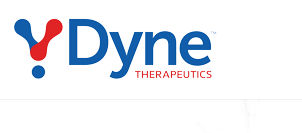Dyne’s pair of dystrophy treatments continue to impress – and push its stock higher
20 May 2024
Clinical ResultClinical StudyAccelerated ApprovalOligonucleotide
Shares of Dyne Therapeutics climbed about 28% on Monday after the company revealed updated data from two ongoing studies in Duchenne muscular dystrophy (DMD) and myotonic dystrophy type 1 (DM1) that suggest higher doses of its experimental therapies have topped the already-impressive, low-dose results that were shared earlier this year.
The biotech said it is pursuing accelerated approval of both DYNE-251 in DMD and DYNE-101 for DM1, based on the strength of their respective surrogate efficacy biomarkers – dystrophin levels for the former, and splicing for the latter.
Propelled by the positive data, Dyne also proposed to raise a $300-million follow-on. The firm closed a similarly hefty offering in January, raising $345 million after reporting early data from the Phase I/II DELIVER and ACHIEVE studies that first put its dystrophy therapies on the map.
At the time, Dyne touted how DYNE-251’s dystrophin level increases surpassed that of Sarepta Therapeutics' Exondys 51 (eteplirsen), the standard-of-care treatment for DMD patients who are amenable to exon 51 skipping – which Monday’s high-dose data has now blown even further out of the water.
Dystrophin boost
The DELIVER trial enrolled six patients with DMD to receive a 10mg/kg dose of DYNE-251 every four weeks, and two participants to the placebo arm. The therapy – a phosphorodiamidate morpholino oligomer (PMO) conjugated to a fragment antibody that binds TfR1 – led to a 2.97% change in dystrophin levels from baseline at six months.
Dyne had reported in January that the low 5 mg/kg dose increased dystrophin protein by 0.28% at six months – which was already well ahead of the 0.06% change from baseline that was seen by Exondys 51 at the same time point in a clinical study.
Additionally, patients receiving DYNE-251 had a mean absolute dystrophin level of 3.22%, and a muscle content-adjusted level of the protein of 7.64%.
The biotech didn’t provide specific figures for the secondary functional endpoints, but said that “trends in improvement were observed” on the North Star Ambulatory Assessment (NSAA), Stride Velocity 95th Centile (SV95C), 10-Meter Walk/Run Time, and Time to Rise from Floor measurements.
Splicing success
The company had previously reported splicing correction levels of 19% and 13% for the 3.4 mg/kg and 1.8 mg/kg dose groups, respectively.
On the functional myotonia endpoint, as measured by video hand opening time (vHOT), the highest dose cohort saw a mean 4.5-second improvement at three months. At the same time point, the lowest dose group had a mean benefit of 3.1 seconds, though by 12 months, the improvement grew to 4.4 seconds, suggesting that the benefit achieved in the 5.4 mg/kg dose group may continue to improve over time.
Dyne said that DYNE-101 also demonstrated an improvement in muscle strength as measured by Quantitative Myometry Testing (QMT), and an early and sustained potential benefit in 10-Meter Walk/Run Test and 5 Times Sit to Stand Test.
For more details,please visit the original website
The content of the article does not represent any opinions of Synapse and its affiliated companies. If there is any copyright infringement or error, please contact us, and we will deal with it within 24 hours.
Organizations
Targets
Hot reports
Get started for free today!
Accelerate Strategic R&D decision making with Synapse, PatSnap’s AI-powered Connected Innovation Intelligence Platform Built for Life Sciences Professionals.
Start your data trial now!
Synapse data is also accessible to external entities via APIs or data packages. Leverages most recent intelligence information, enabling fullest potential.




